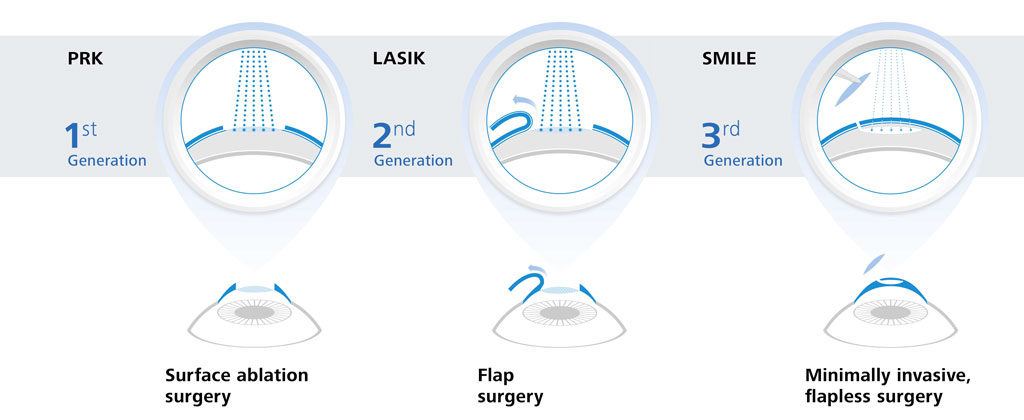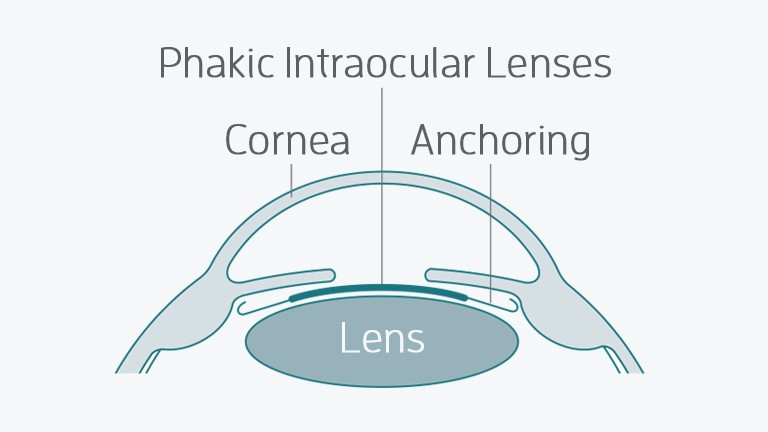CORRECT YOUR EYESIGHT WITH REFRACTIVE SURGERY METHODS
15/11/2018
Refractive surgery is the term used to describe surgical procedures that correct common vision problems (nearsightedness, farsightedness, astigmatism, and presbyopia) to reduce your dependence on prescription eyeglasses or contact lenses.
There are various refractive surgery methods for correcting or adjusting your eye's focusing ability, by using laser excimer to reshape the cornea or implanting a lens inside your eye. The most widely performed type of refractive surgery is LASIK (laser-assisted in-situ keratomileuses), where a laser is used to reshape the cornea. There are three kinds of LASIK surgery method are applied at Japan International Eye Hospital (JIEH):
SBK LASIK
The technique is using the Moria SBK automatic microblade to create the corneal flap, after that, using an excimer laser of the Mel 90 machine (Carl Zeiss) to eliminate refractive error
This method treats refraction from 0.5 to 6 diopters
FEMTOSECOND LASIK
This method creates corneal flap by Femtosecond laser from the Visumax machine (Carl Zeiss), the corneal flap is cut follow the natural curvature of the eyeball, so the flap is thinner than in SBK Lasik. Then, still using an excimer laser of the Mel 90 machine (Carl Zeiss) to eliminate refractive error.
No blade applied in Femtosecond Lasik; it treats refraction from 0.5 to 6 diopters
ReLEx SMILE – Small Incision Lenticule Extraction
- This technique is using Femtosecond lasers from Visumax (Carl Zeiss) cut a layer of the parenchyma under the corneal surface. After that, taking out a thin corneal layer through a very tiny incision (~2mm)
- No flapping and blade required in SMILE, it is not hurting the corneal nerve system, saving maximum corneal endothelial cells
- ReLEx SMILE limits the side effects after surgery such as dry eye, glare…than SBK and Femtosecond Lasik
- SMILE treats refraction from 0.5 to 8 diopters

PHAKIC ICL
If the patient has high myopia and high astigmatism that LASIK cannot intervene, PHAKIC ICL is an optimal solution for these patients.
Phakic ICL is the technique that implanting a soft and thin small lens – ICL (Implantable Collamer Lens) behind the iris and in front of the natural lens to recover the vision. This ICL is designed like a natural part of the eye. It has high biological compatibility with the human body.
Phakic ICL protect intact the corneal thickness and corneal endothelium. This method treats total refraction from 0.5 until 24 diopters.

The advantages of modern Refractive surgery methods:
- No pain
- Quick operation time: only 15 minutes/case
- No need a long rest after surgery
- Participating in daily activities normally
What should be noticed before refractive surgery?
- Please arrange alternative transportation after your surgery, as we do not advise driving or riding for approximately 1-2 days after the procedure.
- Please do not use any eye make-up 24 hours before the surgery, and please do not make-up on the day of the procedure.
- We recommend avoiding alcohol 24 hours prior to and 48 hours after your surgery.
The day of surgery
- You can expect to feel nervous, anxious or excited before your procedure. This feeling is an entirely natural, normal response.
- Please refrain from wearing perfume or cologne on the day of your surgery. Please do not use any hair products containing alcohol, hairspray or mousse.
- Bring good quality sunglasses.
- The day of operation should be a day of rest preferably sleep one hour after the surgery with your eyes covered with protective eye shield (You should wear the protective eye shield for the first three days after the surgery).
- Always avoid rubbing eyes (instead use lubricant drop for irritation).
- Always be careful about activities where the eye may be poked, rubbed or touched.
- If you feel bulging on your eyes, and eyes run, it will be stopped 4 hours after the surgery.
After refractive surgery
24 hours after the surgery
- Take a bath instead of a shower. Avoid any soap or water in the eyes.
- Restrict movement to light activities.
- Work at home is acceptable (You can work for 30 minutes and then take a 5 minutes break).
- Reading and watching TV is permitted as long as the eyes are lubricated.
- Flying in airplanes is allowed provided eyes are lubricated every 30 minutes with lubricating drops or every 2 hourly with lubricating gel.
48 hours after surgery
- Driving can be resumed if adequate vision is confirmed at post-operative evaluation.
- Shower, but continue to avoid soap and water in the eyes.
- Face make-up may be used, but not eye-makeup.
- Office work or study can be resumed.
- Computers can be used, and keep your eyes lubricated.
Day 03 activities
- Exercise without risk to the eyes.
- Be careful while playing with children.
- Moderate alcohol consumption may be resumed (not recommended).
Day 07 activities
- Apply eye-makeup, jogging outdoors, rollerblading, relaxed bicycling, playing golf and lifting weights are allowed.
- Activities can begin in 01 months (with eye protection)
- Racket sports, swimming, scuba diving, snorkeling, sailing, sun tanning, motorcycling, parachuting, baseball, basketball, and skiing.
- Activities can begin in 03 months (with eye protection)
- Water skiing, windsurfing, kayaking and surfing (proceed with caution as these are high-risk activities).
Please remember the eye check-up schedule after the surgery: 01 day after surgery, 01 week after surgery, 01 month after surgery, 03 months after surgery, 06 months after surgery, 01 year after surgery.
To determine the appropriate surgical method, the patient should undergo intensive examinations to determine the correct vision, corneal thickness, and corneal structure. The ophthalmologist will advise the surgical procedure best suited to the condition of the patient.
If you still have questions about refractive surgery methods, please join the Lasik & Phakic Seminar which is held every Wednesday and Saturday at Japan International Eye Hospital. You will through the intensive 5-step examination procedure as well as consulting with an ophthalmologist.
The pre-surgery examination package is free on Wednesdays and Saturdays.
Register here: https://jieh.vn/en/lasik-and-phakic-seminar
